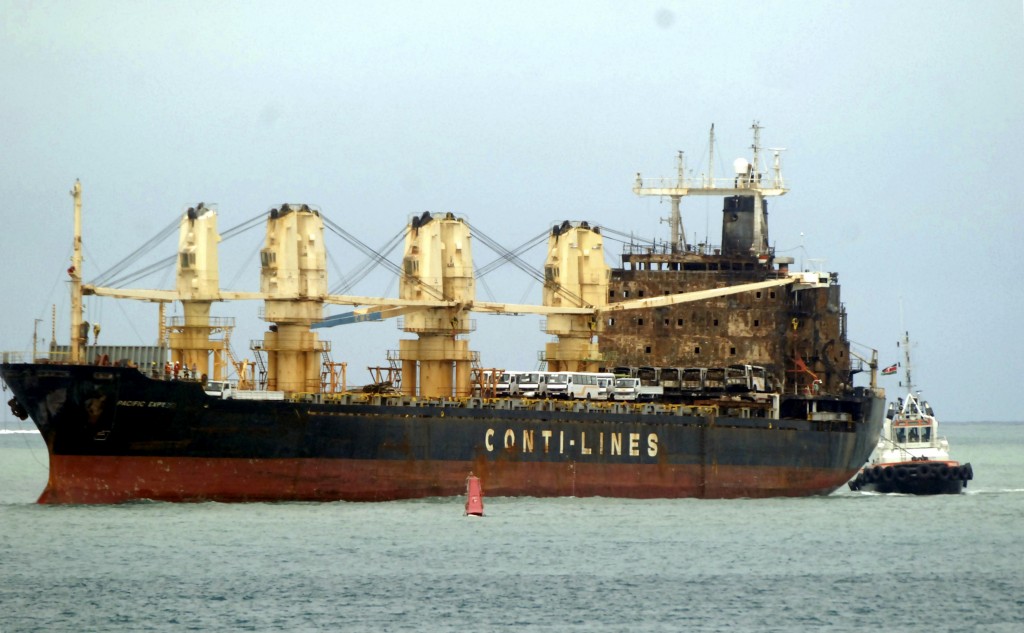Catastrophe modeling firm AIR Worldwide estimates that insured losses from the magnitude 7.2 earthquake that struck eastern Turkey Sunday, October 23rd, near the city of Van, will be between 100 million TRY ($56.5 million) and 300 million TRY ($170 million).
AIR explained that the “range in losses results from uncertainties that exist in estimating earthquake source parameters e.g., magnitude, rupture length, depth, dipping angle, etc.”
The report also noted that “at least 400 aftershocks above M 3.0 have been reported in total, with the strongest of these registering M 6.0. The Van earthquake is the largest to strike Turkey since the 1999 magnitude 7.2 Duzce earthquake, which killed more than 1,000 people and caused significant structural damage.” According to AIR, Turkey has a high rate of earthquake occurrence with more than 7 major quakes in the past twenty years.
AIR said that up to “80 multistory buildings in total—including student dormitories, apartment buildings and hotels—are destroyed in Ercis. Elsewhere, in the district of Celebibag, several buildings collapsed. The earthquake was felt not only in Van Province, but in the provinces of Bitlis, Muş, Batman, Ağrı, Diyarbakir, Mardin, Erzurum, Siirt, Sirnak, İskenderun, and Hatay. The tremor also shook buildings in neighboring Iran and Armenia, though significant damage has not been reported in either country.”
The report also pointed out that “unlike urban centers in western Turkey, where construction is dominated by reinforced concrete, the majority of construction in Van province is unreinforced masonry, according to the Kandilli Observatory and Earthquake Research Institute. At the sub-provincial level, in Ercis, the majority of buildings are unreinforced masonry as well; though roughly a quarter are reinforced concrete, the latter of which better withstands earthquake ground motion.
“An even smaller fraction of buildings can be classified as adobe and rubble stone, both of which are very vulnerable to seismic activity. Indeed, the high vulnerability of adobe and rubble stone, as well as the slightly lower vulnerability of unreinforced masonry construction, comparatively, are partly to blame for extensive damage in Ercis.”
According to the Disaster and Emergency Management Agency of Turkey as of October 24, “more than 2,000 buildings have sustained damage ranging from moderate to complete; the geographical and structural distribution of affected buildings is still being determined. Despite this uncertainty, patterns discernible thus far reveal that the damage from Sunday’s quake is similar to that from past events in Turkey, marked by inadequate reinforcement, lack of confinement at beam-column connections, low quality concrete and soft first stories of buildings. In Turkey, first (ground) floors are commonly used for commercial purposes, with residential units above. The large shop windows and other openings typical in the ground floors of these buildings reduce the lateral resistance significantly, resulting in excessive deformation demands.
“Based on current damage reports, the Kandilli Observatory and Earthquake Engineering Institute estimates that 3 percent of the buildings in the province were damaged beyond repair by Sunday’s quake.”
AIR explained that its industry insured loss estimates include:
• Insured physical damage to property (residential; commercial/industrial), both structures and their contents. The residential insured losses also include estimated losses for the TCIP (Turkish Catastrophe Insurance Pool).
However, the loss estimates do not reflect:
• Losses from non-modeled perils, including landslide and fire-following;
• Losses to automobiles;
• Losses to uninsured properties;
• Losses to land;
• Losses to casualty and life lines;
• Losses to infrastructure;
• Business interruption losses;
• Loss adjustment expenses;
• Demand surge—the increase in costs of materials, services, and labor due to increased demand following a catastrophic event.
Source: AIR Worldwide
Topics Catastrophe Profit Loss Earthquake
Was this article valuable?
Here are more articles you may enjoy.



 US P/C Insurers Post Best Q1 Underwriting Result In 17 Years
US P/C Insurers Post Best Q1 Underwriting Result In 17 Years  ‘Extremely Dangerous’ Hurricane Beryl Takes Aim at Caribbean
‘Extremely Dangerous’ Hurricane Beryl Takes Aim at Caribbean  Farmers Adjusters Cry Foul Over Workloads, Claims Handling in Letter to Regulators
Farmers Adjusters Cry Foul Over Workloads, Claims Handling in Letter to Regulators  Home Insurance at $10,000 a Year Shows California Buyers’ Pain
Home Insurance at $10,000 a Year Shows California Buyers’ Pain 

